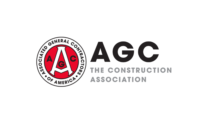The Battle of Material Costs for Construction Contractors

Contractors must walk a fine line when it comes to dealing with sudden changes in material and labor costs.
Let’s face it, bidding and winning the most profitable projects can be tricky if your suppliers’ pricing or your labor projections are not kept up-to-date. If your construction bids are not optimized for market-fueled changes, how will you ever make sure fluctuations don’t wreak havoc on your profitability?
Clearly, contractors must walk a fine line when it comes to dealing with sudden changes in material and labor costs. No contractor wants to end up struggling to determine whether to make material substitutions or change to another supplier.
Coping with Rising Construction Material Costs
Winning the right, most profitable work is never easy, especially when material costs are on the rise. According to the U.S. Bureau of Labor Statistics, material costs increased 4.8 percent over the past year. The high cost of building materials can be traced to several issues, including hurricanes Irma, Harvey, Nate, and Maria along with the Northern and Southern California wildfires.
Experts also point to market uncertainties, higher fuel costs and a changing global market. Whatever the reason, it all adds up to a steeper cost of doing business for construction firms—many of whom are already feeling the strain of a tightening labor market. You can also blame a dip in material costs in 2014-15 for driving increased demand for materials—a classic supply-demand issue.
Winning the Profitability Battle
For most contractors, the success of any project comes down to how well they interpreted the original project design along with holding down rework and delays to a minimum. Much of this can be tied to how well they managed the project and kept track of minute project details and cost through to build-out, including material costs. Beginning with a detailed takeoff and estimate remains a huge part of this success.
How do you beat back some of this pressure in an era of razor-thin profit margins? Clearly, job costing software can help you be more proactive and manage budgets. If you want to thrive, job costing software is your best defense against shrinking profit margins and rising costs.
Not only can it help you accurately forecast costs and expenses, it also allows contractors to ensure shortfalls don’t hold up progress or idle workers push up costs. For example, when you can retrieve reports to back-check and update unit prices, your estimator can see that job costing is up-to-date on labor rates, confirm that materials are being purchased at bid rates and review tax rates.
While profitability can vary from the estimate for a variety of reasons, here are a few more ways job costing software can help you offset the rising costs of materials and labor:
- Project managers have access to accurate and complete job costing;
- Real-time updates provide visibility into whether you are generating
- a profit;
- It is easier to determine where projects went right or wrong;
- It is simpler to track projects by phases and types.
Grow Your Business
When job costing software is used alongside takeoff and estimating software, contractors can gain even greater visibility into why jobs don’t go as planned. These tools allow you to gather better, more detailed information for your job costing efforts. As a result, you can accurately compare job cost against the original estimate and more efficiently boost profits and achieve growth.
However, knowing which software is the right software for your construction business isn’t easy. Let On Center Software help. Get our easy-to-follow, step-by-step eBook now to help you assess and select the right tools.
Looking for a reprint of this article?
From high-res PDFs to custom plaques, order your copy today!




